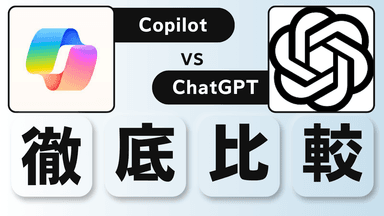
In the rapidly evolving landscape of technology, artificial intelligence (AI) has emerged as a transformative force across industries. Organizations worldwide are racing to integrate AI into their operations to gain competitive advantages, improve efficiency, and drive innovation. This article explores the fundamentals of crafting a robust AI strategy and provides real-world examples of AI applications. By understanding these elements, businesses can navigate the complexities of AI adoption and harness its full potential.
## Understanding AI Strategy
An AI strategy is a comprehensive plan that outlines how an organization will leverage AI technologies to achieve its business objectives. It goes beyond mere implementation; it involves aligning AI initiatives with overall corporate goals, assessing risks, and ensuring ethical deployment.
### Key Elements of an AI Strategy
A successful AI strategy typically includes several core components. First, **vision and objectives**: Organizations must define clear goals, such as enhancing customer experiences or optimizing supply chains. For instance, a retail company might aim to use AI for personalized recommendations to boost sales by 20%.
Second, **data management**: AI thrives on data. A strategy should address data collection, quality, governance, and security. Without high-quality data, AI models can produce inaccurate results, leading to flawed decisions.
Third, **technology infrastructure**: This involves selecting the right tools, platforms, and hardware. Cloud-based solutions like AWS or Google Cloud offer scalable AI capabilities, while on-premises options provide control for sensitive data.
Fourth, **talent and skills**: Building or acquiring AI expertise is crucial. This might include hiring data scientists, upskilling employees through training programs, or partnering with AI consultancies.
Finally, **ethics and compliance**: Strategies must incorporate guidelines for responsible AI use, addressing biases, privacy concerns, and regulatory requirements like GDPR or emerging AI laws.
### Steps to Develop an AI Strategy
Developing an AI strategy requires a structured approach. Begin with an **assessment phase**, where you evaluate current capabilities, identify gaps, and conduct a SWOT analysis (Strengths, Weaknesses, Opportunities, Threats) focused on AI.
Next, **prioritize initiatives**. Not all AI projects are equal; focus on high-impact, low-complexity ones first. Use frameworks like the AI Maturity Model to gauge progress.
Then, **pilot and scale**. Start with proof-of-concept projects to test feasibility. For example, a manufacturing firm might pilot AI-driven predictive maintenance on one assembly line before rolling it out company-wide.
Monitor and iterate: AI strategies aren't static. Regular reviews using KPIs like ROI, accuracy rates, and user adoption ensure continuous improvement.
## AI Application Examples Across Industries
AI's versatility allows it to be applied in diverse sectors, demonstrating its strategic value. Below are examples illustrating how organizations are implementing AI.
### Healthcare: Revolutionizing Diagnostics and Patient Care
In healthcare, AI strategies focus on improving outcomes and reducing costs. One prominent example is IBM Watson Health, which uses AI to analyze medical data for faster diagnoses. For instance, Watson can process vast amounts of literature and patient records to suggest treatment plans for cancer patients, potentially increasing survival rates.
Another application is AI-powered telemedicine. During the COVID-19 pandemic, platforms like Teladoc integrated AI chatbots for initial symptom assessments, triaging patients efficiently and freeing up human doctors for complex cases. Strategically, hospitals adopting such systems report up to 30% reductions in wait times.
Predictive analytics is also key. Hospitals use AI models to forecast patient admissions, optimizing staffing and resources. Google's DeepMind, in collaboration with the UK's NHS, developed an AI system that detects acute kidney injury up to 48 AI 活用事例 hours earlier, showcasing how strategic AI integration can save lives.
### Finance: Enhancing Fraud Detection and Personalized Services
The finance sector employs AI strategies to mitigate risks and personalize experiences. Banks like JPMorgan Chase use AI for fraud detection through anomaly detection algorithms that analyze transaction patterns in real-time. This has reduced fraudulent activities by detecting unusual behaviors, such as sudden large transfers, with over 90% accuracy.
Robo-advisors exemplify AI in wealth management. Companies like Betterment leverage AI to provide automated investment advice based on user profiles, risk tolerance, and market trends. This democratizes financial planning, making it accessible to non-experts.

Algorithmic trading is another strategic application. Hedge funds use AI to predict market movements by processing news, social media sentiment, and economic indicators. Renaissance Technologies' Medallion Fund, powered by AI, has achieved legendary returns, highlighting the competitive edge of data-driven strategies.
### Retail: Driving Personalization and Supply Chain Optimization
Retail giants are using AI to create hyper-personalized shopping experiences. Amazon's recommendation engine, powered by machine learning, analyzes browsing history and purchase data to suggest products, contributing to over 35% of its sales.
In supply chain management, AI strategies help predict demand and optimize inventory. Walmart employs AI to forecast AI 活用事例 product needs based on weather patterns, holidays, and local events, reducing stockouts and waste. During peak seasons, this ensures shelves are stocked efficiently.
Computer vision applications, like those in cashierless stores (e.g., Amazon Go), use AI to track items via cameras, enabling seamless checkouts. This not only enhances customer convenience but also provides valuable data for strategic merchandising decisions.
### Manufacturing: Boosting Efficiency with Predictive Maintenance
Manufacturing's AI strategies emphasize operational efficiency. General Electric uses AI for predictive maintenance on jet engines, analyzing sensor data to predict failures before they occur. This minimizes downtime and extends equipment life, saving millions in repair costs.
Robotics and automation are integral. Tesla's factories integrate AI-driven robots for assembly, improving precision and speed. Strategically, this allows for scalable production of AI 活用事例 electric vehicles, aligning with sustainability goals.
Quality control benefits from AI image recognition. Systems inspect products on assembly lines, detecting defects faster than humans, ensuring higher standards and reducing recalls.
### Education: Personalizing Learning Experiences
In education, AI applications tailor learning to individual needs. Platforms like Duolingo use AI algorithms to adapt lessons based on user performance, making language learning more effective.
Virtual tutors, such as those from Carnegie Learning, provide real-time feedback on math problems, helping students grasp concepts at their own pace. Institutions adopting these see improved retention rates.
Administrative tasks are streamlined too. AI handles grading essays or scheduling, allowing educators to focus on teaching. Strategically, this addresses teacher shortages and enhances educational equity.
## Challenges in Implementing AI Strategies
Despite benefits, AI adoption faces hurdles. Data privacy concerns require robust strategies to comply with regulations. Bias in AI models can perpetuate inequalities if training data is skewed.
High implementation costs and skill gaps pose barriers for smaller organizations. Integration with legacy systems can be complex, necessitating phased approaches.
Ethical dilemmas, like job displacement from automation, demand strategies that include reskilling programs.
## Future Outlook for AI Strategies
Looking ahead, AI strategies will evolve with advancements in generative AI, edge computing, and quantum AI. Organizations that prioritize agility and collaboration will thrive.
Integration with emerging tech like IoT and blockchain will create hybrid strategies, unlocking new applications. For example, AI in smart cities could optimize traffic and energy use.
Sustainability will be key; AI can model climate scenarios to aid environmental strategies.
In conclusion, a well-crafted AI strategy, supported by practical applications, positions organizations for success in an AI-driven world. By addressing challenges proactively and leveraging examples from leading industries, businesses can innovate responsibly and sustainably.